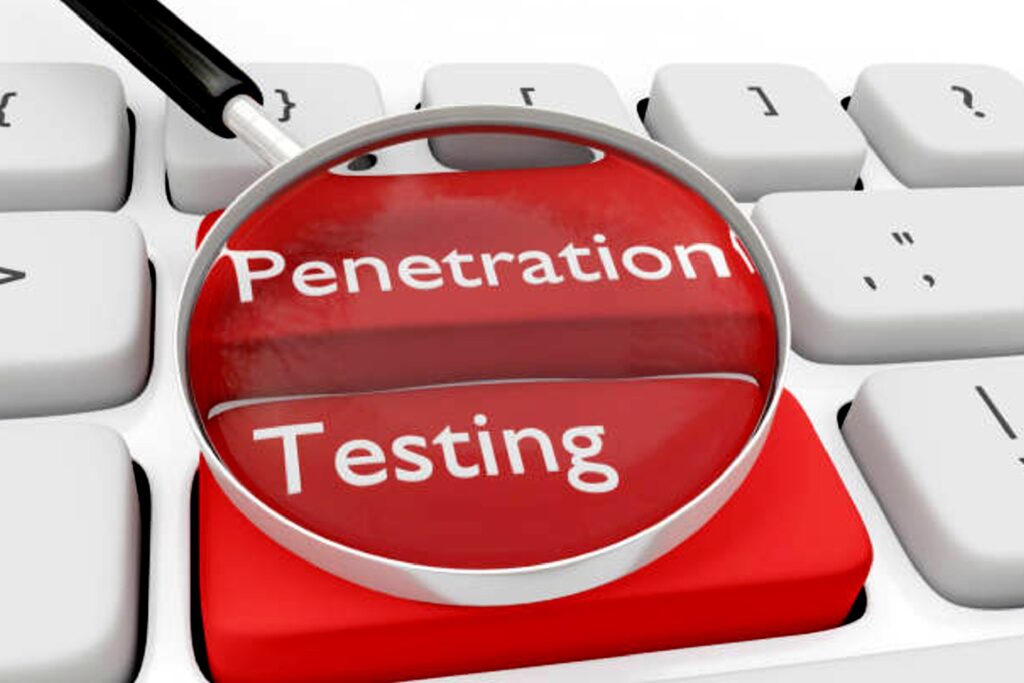Cyber security risks refer to the potential for unauthorized access or attacks on a company’s computer systems and networks. This can result in the loss of sensitive data, financial damage, and reputational harm.
These risks can come from a variety of sources. This include hackers, malware, phishing attacks, and human error. Therefore, it is important for businesses to have effective cybersecurity measures in place. This can help to protect your assets against these risks. In addition, it can also minimize the potential for damage ensuing from it.
There are several key processes that organizations can follow to understand and manage risk related to their information systems:
Risk assessment: This identify potential risks to your company’s information systems. For example, threats, vulnerabilities, and its consequences. Cyber security risk assessment can be done using threat modeling. This allows you to do network vulnerability assessments, and business impact analysis.
Risk evaluation: This evaluates the likelihood and potential impact of identified risks to your organization. It can help your organization prioritize which risks to address first and allocate resources accordingly.
Risk response: Cyber security risk response select and implement strategies to mitigate or manage identified risks. This can include measures to implement security controls, contingency plans, and transferring risk through insurance or other means.
Risk monitoring and review: This involves regular reviews and monitoring your company’s risk management processes. The goal of this strategy is to ensure effective and up-to-date risk management process. It can also include testing and reviewing security controls, reviewing and updating risk assessments, and monitoring for new risks.
Cyber Security Risks assessment
Cybersecurity risk assessment is the process of identifying and assessing potential risks to an organization’s computer systems and networks. Risk assessment is an important management process, because it helps you to understand threats, vulnerabilities, and its consequences. Having these knowledge allows you to take appropriate action to manage these risks.
There are several key steps that organizations can follow in the risk assessment process:
Identify assets
The first step in the risk assessment process is to identify the assets that are being protected, such as data, systems, and networks. This will help the organization to understand what is at risk and to prioritize which assets are most important to protect.
Identify threats
The next step is to identify the threats that could potentially compromise the organization’s assets. This may include external threats such as hackers, malware, and phishing attacks, as well as internal threats such as human error and insider threats.
Identify vulnerabilities
After the threats have been identified, the organization can then identify the vulnerabilities that could be exploited by these threats. This may include weaknesses in the organization’s security controls, processes, or systems, as well as external factors such as outdated software or unpatched vulnerabilities.
Assess consequences
The organization can then assess the potential consequences of the identified threats and vulnerabilities. This may include financial impact, reputational harm, legal liabilities, and other negative outcomes.
Determine likelihood and impact: The final step in the risk assessment process is to determine the likelihood and impact of the identified risks. This can be used to prioritize which risks to address first and allocate resources accordingly.
There are several methods that organizations can use to conduct a cybersecurity risk assessment, including:
- Threat modeling: Threat modeling involves identifying the potential threats to the organization’s assets and analyzing the impact of these threats. This can help organizations to understand their risk profile and identify appropriate risk response strategies.
- Vulnerability assessments: Vulnerability assessments involve identifying vulnerabilities in the organization’s systems and networks and assessing the potential impact of these vulnerabilities. This can help organizations to identify and address weaknesses in their security posture.
- Business impact analysis: Business impact analysis involves analyzing the potential impact of a risk on the organization’s business operations, including the financial and reputational consequences. This can help organizations to understand the potential impact of a risk and prioritize their risk response efforts accordingly.
Overall, cybersecurity risk assessment is an important step in the risk management process, as it helps organizations to understand the threats, vulnerabilities, and consequences that they are facing and to take appropriate action to mitigate or manage these risks. By conducting regular risk assessments, organizations can stay up-to-date on their risk profile and take appropriate action to protect their assets.
Cyber Security Risks evaluation
Cybersecurity risk evaluation refers to the process of evaluating the likelihood and potential impact of identified risks to an organization’s computer systems and networks. This is an important step in the risk management process, as it helps organizations prioritize which risks to address first and allocate resources accordingly.
There are several key considerations that organizations should take into account when evaluating cybersecurity risks:
Likelihood of the risk
The likelihood of a risk refers to the probability that the risk will occur. This can be assessed through a variety of methods, such as analyzing historical data, conducting risk assessments, or conducting scenario analysis.
Potential impact of the risk
The potential impact of a risk refers to the potential consequences of the risk occurring. This can include financial impact, reputational harm, legal liabilities, and other negative outcomes.
Severity of the risk
The severity of a risk is a combination of the likelihood and potential impact of the risk. This can be used to prioritize which risks to address first, with higher severity risks typically receiving greater attention.
Risk tolerance
The organization’s risk tolerance is an important factor in the risk evaluation process. This refers to the level of risk that the organization is willing to accept, which may be influenced by factors such as the organization’s size, industry, and business objectives.
There are several methods that organizations can use to evaluate cybersecurity risks, including:
Risk matrix
A risk matrix is a graphical representation of the likelihood and potential impact of a risk. Risks are plotted on the matrix based on their likelihood and impact, with higher severity risks typically being located in the upper-right quadrant.
Risk scoring
Risk scoring entails assigning numerical values to assess risk likelihood and impact, aiding in overall severity calculation. It streamlines risk prioritization within organizations, ensuring efficient risk management.
Opt for a suitable risk scoring approach considering your organization’s size and intricacy. With various methodologies available, selecting the right one is crucial.
Before you start any risk scoring, you should engage all stakeholders in the risk scoring process. This ensures everyone’s agreement before commencement for accurate identification and assessment. Regularly updating scores is essential due to evolving risks. This maintains score relevance.
Primarily, risk scoring guides mitigation priorities. Highest-scored risks are tackled first. Furthermore, risk scoring evaluates risk management effectiveness. Tracking scores over time gauges risk reduction success. However, this process can be managed better using risk scoring software for enhanced accuracy and efficiency.
Risk categorization
Risk categorization involves grouping risks into categories based on their likelihood, impact, or other factors. This can help organizations to better understand and manage their risk profile.
Overall, cybersecurity risk evaluation is an important step in the risk management process, as it helps organizations to prioritize which risks to address first and allocate resources accordingly. By evaluating the likelihood and potential impact of identified risks, organizations can more effectively manage their risk profile and protect their computer systems and networks.
Cyber Security Risks response
Cybersecurity risk response refers to the strategies and actions that an organization takes to mitigate or manage identified risks to its computer systems and networks. There are several key steps that organizations can follow in the risk response process:
Identify the risk
The first step in responding to a cybersecurity risk is to identify and assess the potential threats, vulnerabilities, and consequences that the organization is facing. This can be done through techniques such as threat modeling, vulnerability assessments, and business impact analysis.
Evaluate the risk
After the risk has been identified, the next step is to evaluate the likelihood and potential impact of the risk. This can help organizations prioritize which risks to address first and allocate resources accordingly.
Select a risk response strategy
Once the risk has been identified and evaluated, the organization can then select a risk response strategy that is appropriate for the specific risk. Some common risk response strategies include:
- Avoiding the risk: This involves eliminating the risk by not engaging in activities that would expose the organization to the risk.
- Transferring the risk: This involves transferring the risk to a third party, such as through insurance or a vendor agreement.
- Mitigating the risk: This involves implementing measures to reduce the likelihood or impact of the risk. This can include implementing security controls, implementing contingency plans, or improving processes to reduce the risk of human error.
- Accepting the risk: This involves deciding to accept the risk and not take any further action to mitigate it. This is typically only done when the cost of mitigating the risk is deemed to be higher than the potential impact of the risk.
Implement the risk response
After the risk response strategy has been selected, the organization can then implement the necessary measures to mitigate or manage the risk. This may involve implementing new security controls, updating policies and procedures, or training employees on how to handle risks.
Monitor and review
The final step in the risk response process is to regularly monitor and review the organization’s risk management processes and strategies to ensure that they are effective and up-to-date. This can include testing and reviewing security controls, reviewing and updating risk assessments, and monitoring for new risks.
Overall, responding to cybersecurity risks involves a continuous cycle of identifying, evaluating, responding to, and reviewing risks to ensure that the organization’s computer systems and networks are as secure as possible.
Cyber Security Risks monitoring and review
Cybersecurity risk monitoring and review refers to the ongoing process of reviewing and assessing an organization’s risk management processes and strategies to ensure that they are effective and up-to-date. This is an important step in managing risk related to the organization’s computer systems and networks, as it helps to identify and address any new or emerging risks that may have arisen.
There are several key activities that organizations can engage in as part of their risk monitoring and review process:
Review and update risk assessments
It is important for organizations to regularly review and update their risk assessments to ensure that they are accurate and reflect the current risk environment. This may involve reviewing and updating the list of threats, vulnerabilities, and consequences that the organization is facing, as well as the likelihood and potential impact of these risks.
Test and review security controls
Organizations should regularly test and review their security controls to ensure that they are functioning as intended and providing the desired level of protection. This may involve conducting penetration tests, vulnerability assessments, or other types of security testing.
Monitor for new risks
As the risk environment is constantly changing, it is important for organizations to stay up-to-date on new and emerging risks. This may involve monitoring industry news and alerts, as well as conducting regular reviews of the organization’s own systems and networks to identify any potential new risks.
Review and update risk response strategies
Are your risks responses still viable? Review and update your organization’s risk response strategies to ensure that they are still effective as required. This may involve implementing new security controls, updating policies and procedures, or revising the organization’s contingency plans.
Monitor and review risk management processes
It is also important for organizations to regularly review and assess their overall risk management processes to ensure that they are effective and efficient. This may involve reviewing the organization’s risk management policies and procedures, as well as evaluating the effectiveness of the organization’s risk response strategies.
Overall, risk monitoring and review is an important part of any organization’s risk management efforts. By regularly reviewing and assessing the organization’s risk management processes and strategies, organizations can stay up-to-date on new and emerging risks and take appropriate action to mitigate or manage these risks.
Overall, managing risk related to information systems involves a continuous cycle of identifying, evaluating, responding to, and reviewing risks to ensure that the organization’s information systems are as secure as possible.
Your Takeaway
Cyber security risks have the potential to cause unauthorized access or attacks on a systems and networks. This in turn can lead to data loss, financial harm, and reputational damages. These risks come from hackers, malware, phishing attacks, and human error. Therefore, it’s important for businesses to have cyber security measures in place to identify intrusion, prevent, and protect against them. This can help minimize potential damage and data loss.




